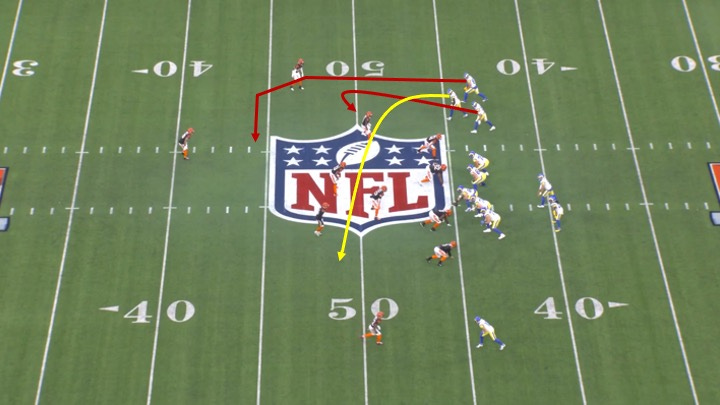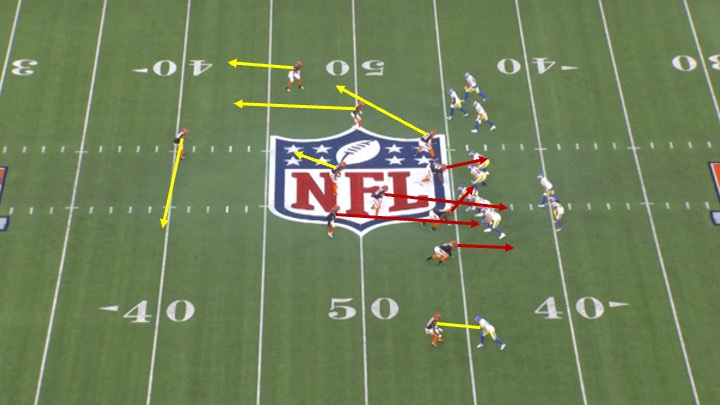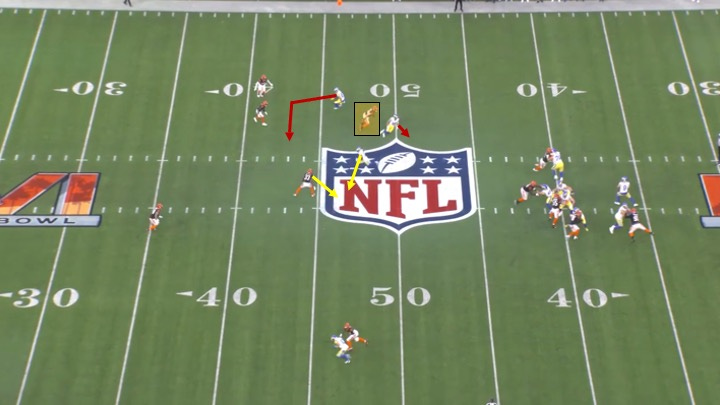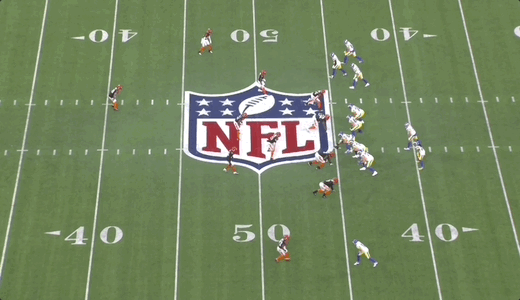Executing the Spin-Dig
And a Look Back at Matthew Stafford's "No-Look" Pass in Super Bowl LVI
We’ve written before about how Sean McVay does a great job of finding ways to run the same route concepts out of different looks. This allows the offense to keep going back to the same plays they are great at executing regardless of the defense. Players being comfortable with a route concept and having an innate feel for it are critical to a given playcall’s execution, and that will certainly be a factor in this breakdown.
In the Rams’ Super Bowl LVI win over the Bengals, the biggest play of the game (Matthew Stafford’s “no-look” pass on the game-winning TD drive) came on a concept they had already run successfully earlier in the game out of a different look. That concept is the “Hook-Dig,” or “Spin-Dig,” or “Option-6,” or “Bulls” route combination (there are several other names for it).
The concept is a simple 2-receiver route combination. One receiver runs a hook and another runs a wrap-in behind him. On this first example from Super Bowl LVI, a 3rd down in the 2nd quarter, the Rams aligned in a 3x1 bunch formation. The #3 and #1 receivers would run the Spin-Dig combo (the red routes below) with the extra receiver running an in-breaker:
The Bengals would use lots of post-snap movement and disguise before bringing a blitz and finishing in quarters “lock” coverage:
It didn’t matter. The shallow crosser would keep the underneath defender in the middle of the field from impacting the play. That allowed Stafford to isolate the Wrap-in/hook combination off of the other underneath defender (Sam Hubbard), a defensive end dropping out into coverage:
Hubbard bit on the hook, leaving tight end Brycen Hopkins open behind him:
The result was a 16-yard gain and a first down.
With just over 3 minutes remaining in the game and the Rams trailing by 4, they would go back to the same concept. Only this time it was out of a 2x2 formation. And instead of a tight end aligned on the outside running the wrap-in, Cooper Kupp would run it:







